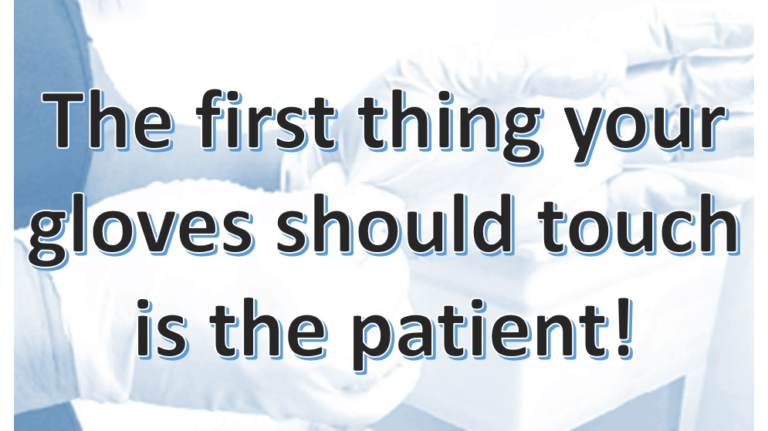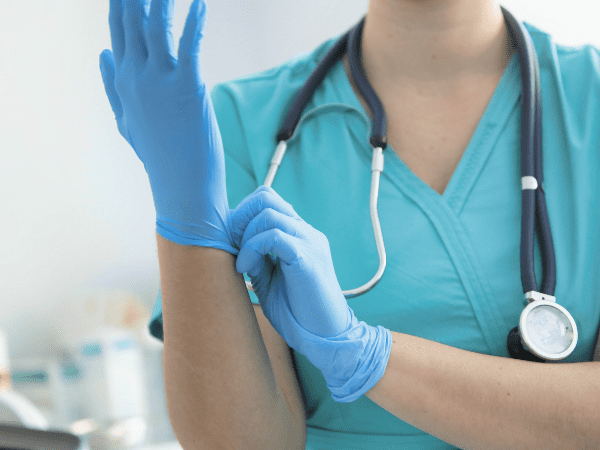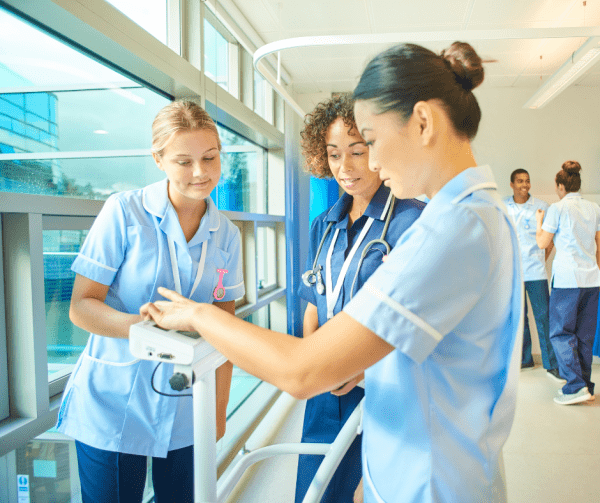Workplace Wednesday: Just Kidding Around in Pediatrics
Workplace Wednesday Pediatrics Congrats! It takes a special person to work with kids! You are…

A lot of students think that you should put your gloves on immediately after washing your hands. But let’s think about this: who are those gloves there to protect? You…or the patient?
In reality, gloves are there to protect BOTH you AND the patient! If you put on gloves when you walk into a room, then touch things like the bed, the privacy curtain, the bed controller, etc., your gloves will become contaminated. By touching the patient with those contaminated gloves, especially body openings like eyes, nose, mouth, genitals, incisions, wounds, etc., you are providing an easy route for those germs to invade the patient by bringing them right to the doorway.
When performing patient care, you should wait to put your gloves on until immediately before that care begins. So, gathering supplies…no gloves yet. Preparing the patient for the skill…no gloves yet. Obtaining water for bathing…no gloves yet. Put your gloves on when everything is ready and you are about to begin the skill.

Many surfaces in medical settings are contaminated with pathogens, including the privacy curtain. Patients in bed have coughed and sneezed (and those droplets have likely traveled the 4 feet to the curtain), patients have scratched what itched and touched the curtain, staff members touch the curtain with soiled gloves, visitors touch the curtain bringing in outside pathogens, doctors touch the curtain after examining other patients. The curtain is quite simply not clean (and is only taken down and laundered once or twice a year). This is why we wash our hands after providing privacy. We don’t want to contaminate our hands before touching the patient.
Most patients in medical settings are already ill or injured, which means that their immune system is already working on something else, somewhere else in the body. It is vital to protect that patient from other infections while they are receiving treatment. Infections acquired in the healthcare setting, known as nosocomial infections (also called healthcare acquired infections), affect an estimated 5-10% of all patients receiving treatment. That means that as many as 1 in 10 people in a hospital will become infected with something else while receiving medical care – usually because of healthcare workers! This could eventually cost the patient lots of money because of additional days in the hospital, additional medications and treatments and time lost from work. These additional infections can even become serious enough to result in death!
When patients go to the hospital, or nursing facility, they take their germs with them. These are the same germs that made them sick enough to need medical care in the first place. We don’t want to spread those big, bad pathogens to other patients in that setting. So, it is important not to touch the patient with dirty, contaminated hands or soiled gloves. It doesn’t make sense to wash your hands, put on gloves and then touch that curtain, because you are immediately contaminating your gloves before you ever even get to the patient!
Keep your patients safe from all the pathogens in a healthcare setting. Perform your opening, wash your hands, get your supplies, complete your preparations and THEN put your gloves on…right before actually touching the patient. Keep your gloves clean if they will be used on the patient.
Click the link to go to the CDC website for specific information on hand hygiene!
Workplace Wednesday Pediatrics Congrats! It takes a special person to work with kids! You are…
Test Tip Tuesday Final Secret to Passing the CNA Clinical Exam Part 1 Corrections are…

Test Tip Tuesday Privacy Curtain Close the Privacy Curtain For All Skills…Except One! Privacy Curtain…
FAQ Friday Do You Need a Barrier to Turn the Faucet On? Skill: All Answer:…
